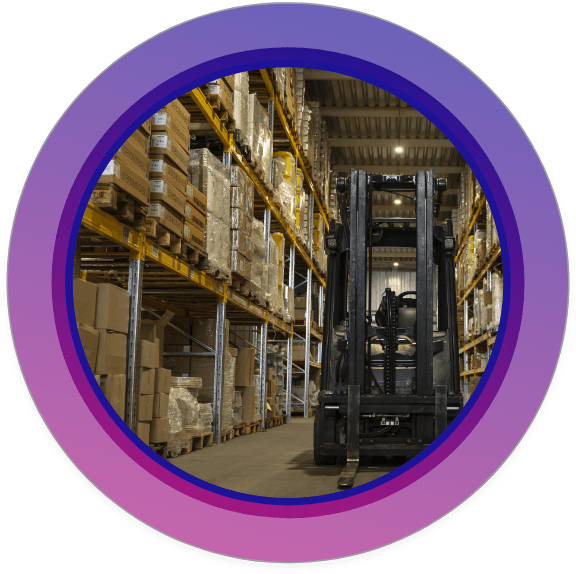No products in the cart.
How to Reduce Lead Time in Supply Chain: Strategies for Faster Operations
What is Lead Time in Supply Chain Management?
In supply chain management, lead time refers to the total time required to move a product or material from the initial order placement to its delivery. In the case of product packaging, specifically, it's the time you spend waiting for your packaging to be delivered to your door after you finalize, confirm, and pay for your order.
It's important to note that several types of lead times are incorporated into supply chain processes: supplier lead time (also called production lead time), transportation lead time, and customer lead time. All have an impact on customer satisfaction, but none as much as customer lead time.


Excessive production lead times in your supply chain can impact costs, customer satisfaction, and overall operational efficiency. Several key factors can cause excess supply chain lead times including issues with shipping disruptions, labor shortages, production constraints, and poor demand forecasts.
In this blog, we'll discuss just a few ways to streamline the supply chain lead time for your product packaging and how working with a company like CarePac can help give you a competitive advantage, meet customer demand, and reduce manufacturing lead time in your supply chain.
Streamlining Packaging Procurement to Reduce Lead Time
By taking a proactive approach to packaging procurement, you can minimize your supply chain lead time and keep your production schedule on track. Working with a reliable partner like CarePac ensures consistent quality and final delivery in a timely manner. Strategies like bulk purchasing, pre-planning, and local sourcing further optimize lead times and improve production efficiency. A well-structured packaging strategy not only helps you optimize inventory management, but also strengthens your overall supply chain, allowing you to meet customer demand with confidence.
Many customers work with unreliable suppliers who promise high-quality, inexpensive packaging that's produced extremely quickly and produced by a promised delivery date. Unfortunately, you can really only have two and this is why effective supply chain planning is so important. You don't want issues with your packaging procurement process or supplier performance to lead to lost sales, excess stock, and unhappy customers. Your supply chain and customers are precious -- treat them that way.
Inventory Optimization: Reduce Lead Time Delays with Better Inventory Management
Did you know that you can reduce supplier lead time delays with a better inventory management system? By leveraging key performance indicators such as total cost analysis, historical data, real-time tracking of inventory levels for your finished product, advanced forecasting algorithms to predict your future demand, and market trends, you'll be able to order just the right amount of packaging and avoid overstocking or understocking, both of which can have a detrimental impact on your entire supply chain and cash flow. One of the best ways to reduce lead times is to establish appropriate ones.
A couple popular value stream mapping and inventory optimization strategies used by inventory management professionals are Just-In-Time (JIT) and Safety Stock. Both use a mix of historical sales data to reduce lead times and enhance your competitive edge with your supply chain operations.
Just-In-Time (JIT)
This supply chain strategy aims to minimize excess inventory and reduce lead times by ordering goods and raw materials only when they are needed. This reduces storage costs and waste but requires accurate demand forecasting and reliable suppliers to avoid supply chain shortages or negative impacts to your production process or lead times. Many businesses eliminate waste by using the JIT strategy to identify when it's time to make bulk purchase orders for raw materials or product packaging.

Safety Stock
This supply chain strategy maintains a buffer of inventory ("safety stock levels" or "stock outs") to account for unexpected demand fluctuations or supply chain disruptions, ensuring availability even when there are delays in delivery expectations. One of the disadvantages of maintaining safety stock levels is that it can potentially increase storage costs, especially if you're purchasing from multiple suppliers.

Relationships with Local Suppliers: How to Ensure Faster Lead Times
Another factor of supply chain management that can lead to excess inventory or impact lead times is issues with internal and external communication. If you aren't talking to your internal team about your operational efficiency or discussing lead time expectations with your product packaging team, how would you even know what the expected lead time is, let alone that you need to reduce lead times?


By keeping the line of communication open, you can also negotiate faster turnaround times and secure priority treatment. Ask your existing product packaging supplier for a lead time menu so you have accurate lead times and can incorporate these lead times into your production process.
Finding backup suppliers is also incredibly important to keep your production schedules on track. You should find key suppliers and multiple vendors in different areas of the United States (and world.) This way, your manufacturing processes won't be delayed if there's natural disasters, issues with raw material procurement, or labor shortages. If you want to optimize inventory management, establishing additional supplier relationships is one area that's often overlooked.
Leveraging Supply Chain Software & Demand Forecasts to Improve Inventory Lead Time
If you have extended lead times that you want to reduce (whether it's raw material lead time or your packaging lead time), leveraging supply chain software can help improve your production process. These tools provide real-time insights, optimize ordering schedules, and prevent stock shortages, ensuring a smoother production flow.
Partnering with a reliable packaging provider like CarePac further strengthens your supply chain by offering consistent lead times, flexible ordering options, and dependable support. By combining technology with the right packaging partner, you can streamline operations and keep production running efficiently. Have questions about how your product packaging can help reduce lead times? Take a look at our convenient lead time menu or contact us today for more information.
Let's Get Started

Made In
The USA

Full Pouch
Customization


